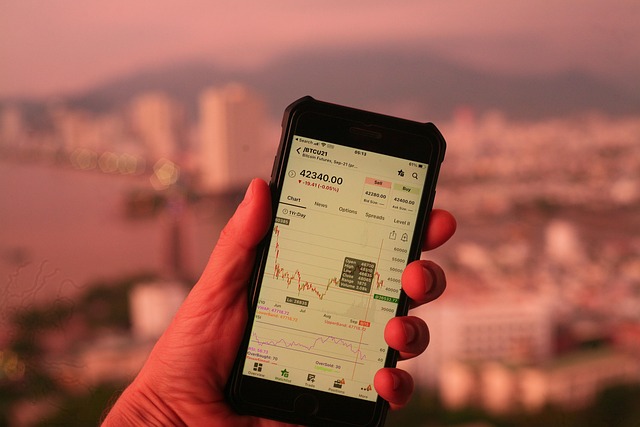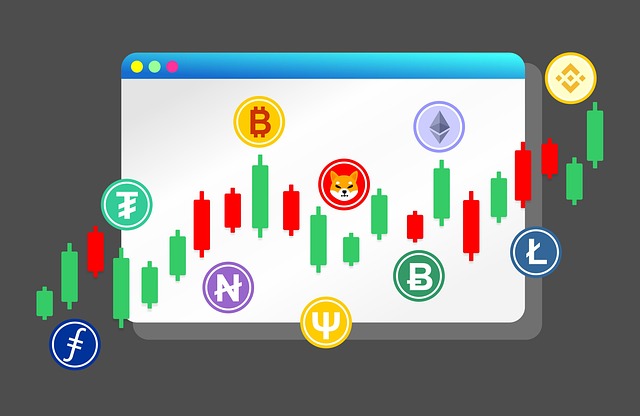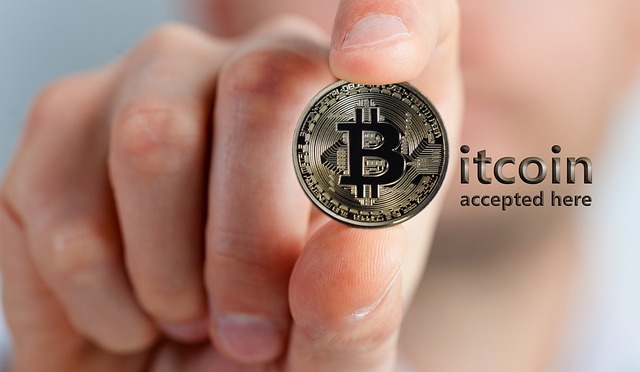Best apps to buy crypto in India 2025: top picks and how to choose
Author: Jameson Richman Expert
Published On: 2025-11-14
Prepared by Jameson Richman and our team of experts with over a decade of experience in cryptocurrency and digital asset analysis. Learn more about us.
Looking for reliable apps to buy crypto in India? This comprehensive guide reviews the best mobile and web apps available in 2025, explains how to choose the right platform, breaks down fees, KYC and tax considerations, and gives step-by-step instructions to start buying crypto safely. Whether you are a beginner wanting low-fee, easy-to-use apps or an advanced trader seeking derivatives and margin, you'll find actionable advice, trusted resources, and recommended exchanges with sign-up links.

Why choosing the right app matters
Apps to buy crypto in India vary widely in security, fees, supported coins, payment methods (UPI, bank transfer, credit/debit card), regulatory compliance, and customer support. Picking the wrong app can cost you in hidden fees, poor liquidity, or even exposure to security risks. Good apps protect your funds with strong security (cold storage, multi-factor authentication), clear fee structures, and transparent KYC processes that comply with Indian regulations.
Regulatory and safety context (India, 2025)
The regulatory landscape for cryptocurrencies in India continues to evolve. Exchanges operating in or serving Indian residents must follow Know Your Customer (KYC) and Anti-Money Laundering (AML) guidelines. For the latest official statements and rules, check the Reserve Bank of India and Ministry of Finance pages:
- Reserve Bank of India (RBI)
- Ministry of Finance, India
- Overview of cryptocurrency regulation in India (Wikipedia)
Note: rules may change; always confirm current guidance before investing.
How to choose the best app to buy crypto in India
When evaluating apps, compare them on these critical factors:
- Security: Two-factor authentication (2FA), cold storage for funds, insurance coverage, and audited security practices.
- Fees: Deposit, withdrawal, trading (maker/taker) and spread fees. Transparent fee tables are a plus.
- Payment options: UPI, IMPS/NEFT/RTGS, cards, and P2P options. UPI integration often reduces costs for small purchases.
- Supported coins: Does the app list the tokens you want (BTC, ETH, stablecoins, altcoins)?
- Liquidity & market depth: Important for large trades to avoid slippage.
- User experience: App stability, speed, and educational resources for beginners.
- Compliance & KYC: Clear, fast KYC processing and legal compliance in India.
- Advanced features: Staking, lending, margin trading, futures — useful for more experienced users.
- Customer support: Fast, multi-channel support (chat, email, phone).

Top apps to buy crypto in India (2025) — detailed reviews
Below are widely used apps split by target user: beginner-friendly, advanced trading, and decentralized options. Each entry includes pros, cons, typical fees, and ideal user profiles.
1. CoinDCX (beginner-friendly, strong Indian presence)
CoinDCX is one of India’s most popular platforms, known for local payment integration and easy onboarding.
- Pros: Intuitive mobile app, UPI & bank transfers, low fees on DCX’s spot trading, strong educational content.
- Cons: Advanced derivatives are separated into other product apps, occasional withdrawal delays during high volume.
- Best for: Indian beginners who want simplicity and local customer support.
2. WazirX (peer-to-peer UPI, strong liquidity for Indian INR pairs)
WazirX offers easy INR on/off ramps via P2P UPI transfers and a simple interface.
- Pros: P2P INR deposits avoid card fees, large user base, clear fee tiers.
- Cons: Historically had governance questions; verify current ownership and compliance status before depositing large amounts.
- Best for: Users prioritizing INR liquidity and low-cost deposits.
3. ZebPay (longstanding Indian exchange)
ZebPay has been operating in India for years and focuses on consumer protection and compliance.
- Pros: Reputation for compliance, simple UI, recurring buys and staking on select assets.
- Cons: Slightly higher trading fees on some pairs compared to global exchanges.
- Best for: Investors who value brand trust and regulatory focus.
4. Binance (global liquidity; India support via Binance Lite & P2P)
Binance is ideal for traders who want a huge selection of coins, low fees, and advanced features. Indian users commonly use Binance P2P or Binance Lite features for INR on-ramps. Sign up link: Create a Binance account.
- Pros: Deep liquidity, lowest fees when using BNB discounts, advanced margin/futures offerings and extensive token catalog.
- Cons: Complex UI for beginners; regulatory considerations vary by jurisdiction.
- Best for: Intermediate to advanced traders and users who want broad token access.
For traders moving into advanced derivatives and charting, resources like “Binance Perpetual Futures list on TradingView — the ultimate guide for advanced cryptocurrency traders” provide useful guidance on integrating derivatives trading with charting platforms: read the guide.
5. MEXC (large altcoin selection; often lists new projects)
MEXC caters to traders looking for new token listings and competitive fees. If you want to try MEXC, use this invite: Sign up at MEXC.
- Pros: Wide token selection, promotions for new tokens, futures and margin available.
- Cons: Higher risk with newly listed tokens; exercise due diligence.
- Best for: Altcoin hunters and active traders.
6. Bitget (derivatives and copy trading)
Bitget is focused on derivatives and copy trading — good for traders who want to follow experienced strategies. Sign-up: Create a Bitget account.
- Pros: Copy trading, derivatives suite, competitive fees for futures.
- Cons: Derivatives entail high risk; margin management required.
- Best for: Advanced traders and users who want social trading features.
7. Bybit (fast execution, derivatives)
Bybit is another major derivatives exchange with robust matching engines and liquidity. Useful for margin and futures traders. Referral link: Join Bybit.
- Pros: High-performance trading engine, advanced order types.
- Cons: Not ideal for buy-and-hold beginners focused only on spot trading.
- Best for: Professional and active derivatives traders.
8. Decentralized options and wallets (MetaMask, Trust Wallet)
If you prefer self-custody, consider wallet apps like MetaMask or Trust Wallet that connect to decentralized exchanges (DEXes) such as Uniswap or PancakeSwap. Self-custody gives you full control but increases responsibility for seed phrase security.
- Pros: Full control over funds, access to DeFi ecosystem and yield opportunities.
- Cons: No customer support for lost keys; DEXs may have low liquidity or scam tokens.
- Best for: Experienced users comfortable with wallet security and DeFi risks.
Step-by-step: How to buy crypto in India using an app
- Choose an app: Pick one from the list above based on your goals — beginners: CoinDCX/WazirX/ZebPay; advanced: Binance/MEXC/Bitget/Bybit.
- Create an account & complete KYC: Provide PAN, Aadhaar, proof of address. KYC is required by Indian exchanges to comply with AML rules.
- Deposit INR: Use UPI, IMPS/NEFT/RTGS, or P2P UPI on supported platforms. Card deposits are faster but costlier.
- Pick the trading pair: Common pairs are BTC/INR, ETH/INR, USDT/INR (or buy stablecoins like USDT first to trade on global exchanges).
- Place an order: Market order (instant, pay spread) or limit order (control price, may not fill immediately).
- Transfer to self-custody (optional): For long-term holding, consider transferring to a hardware wallet (e.g., Ledger) or a trusted software wallet.
- Report & track taxes: Keep trade records for capital gains tax reporting in India.
Fees and cost considerations
Fees differ by app and transaction type. Typical fee categories include:
- Deposit fees: UPI usually free; card deposits 1–3%.
- Trading fees: Maker/taker fees (0–0.2% typical on larger global exchanges, higher on Indian apps for retail pairs).
- Withdrawal fees: Crypto withdrawal network fees + any platform fee; INR withdrawal fees may apply for bank transfers.
Always check the platform’s fee schedule and test small deposits first to understand total cost. For tips on fee optimization and whether exchanges charge to sell or trade crypto, guides like “Does Revolut charge for selling crypto?” can provide context on fee models across platforms: Does Revolut charge for selling crypto?

Security best practices
- Enable 2FA (Google Authenticator or hardware 2FA) — avoid SMS-only 2FA when possible.
- Use unique, strong passwords and a password manager.
- Withdraw long-term holdings to a hardware wallet and keep the seed phrase offline.
- Verify URLs and use official app stores to download mobile apps.
- Beware of phishing attempts: never share private keys, seed phrases, or one-time codes.
Advanced trading: margin, futures and bots
If you plan to trade derivatives (margin, perpetual futures) or use trading bots, understand the higher risks and platform requirements. Exchanges like Binance, Bybit, Bitget, and MEXC offer derivatives; however, trading futures requires solid risk management and knowledge of leverage.
For a practical deep dive on using trading platforms and TradingView for futures, see this detailed guide: Binance Perpetual Futures list on TradingView — Ultimate Guide.
Regarding automated trading, many traders use bots to execute strategies 24/7. If you consider bots, review legal and operational considerations — some jurisdictions restrict certain automated activities. An explanatory piece on stock trading bots covers rules, risks, and best practices which largely apply to crypto trading bots too: Are trading bots legal? Rules, risks and best practices.
Practice before risking real money
New traders should test strategies using demo accounts or practice trading apps before committing capital. Simulators and paper-trading platforms help you build discipline and learn order types without financial risk. See curated practice tools and strategy tips: Practice stock/trading app guides — many concepts apply to crypto as well.

Taxes and record keeping in India
From 2022 onwards, India introduced clear taxation on crypto gains, but details can change. Key points to remember:
- Cryptocurrency gains are generally taxable — short-term and long-term capital gains rules can apply depending on holding period and classification.
- Some transactions (e.g., income from lending/staking) may be treated as income and taxed accordingly.
- Exchanges usually provide transaction reports — keep meticulous records (date, time, amount, trade pair, INR value) for tax filing.
Consult a qualified tax professional for personalized advice and keep up to date with notifications from the Central Board of Direct Taxes (CBDT).
On-ramp strategies: Fiat-first vs. stablecoin route
Two common approaches for Indian users:
- Fiat-to-spot via INR: Buy BTC/INR or ETH/INR on local exchanges using UPI or bank transfer. This is simple and avoids extra conversion steps.
- Stablecoin route: Buy USDT/USDC with INR on a local exchange, then transfer the stablecoin to global exchanges (Binance, Bybit, Bitget, MEXC) to access a broader token universe and lower fees. Be mindful of withdrawal fees.
For users seeking global trading features or lower trading fees, the stablecoin route combined with accounts on global exchanges can be efficient — sign-up links: Binance (register), MEXC (register), Bitget (register), Bybit (register).
Common beginner mistakes and how to avoid them
- Poor security practices: Store large holdings on exchanges only temporarily; use hardware wallets for long-term storage.
- Chasing hype: Avoid investing based solely on social media trends; research token fundamentals and liquidity before buying.
- Ignoring fees: Consider total cost (deposit + trade + withdrawal + spread).
- Using excessive leverage: Leverage amplifies gains and losses — only experienced traders should use it.
- No tax planning: Maintain records and consult tax advisors early to avoid surprise liabilities.

Comparing apps: an example quick checklist
Before signing up, run this checklist for each app you consider:
- Is the company registered and does it disclose leadership and corporate structure?
- What KYC documents are required, and how long does onboarding take?
- What deposit and withdrawal options are provided for INR?
- Are fees clearly listed (spot, margin, withdrawal)?
- Does the app offer insurance coverage or proof of reserves?
- Is there 24/7 customer support and a strong knowledge base?
- Are advanced products segregated (easier to avoid by mistake)?
Useful high-authority resources
- Cryptocurrency — general background (Wikipedia)
- Reserve Bank of India — official central bank guidance
- Ministry of Finance — policy and tax updates
Final checklist before your first buy
- Install the app from an official source (Apple App Store / Google Play / official website).
- Complete KYC and enable 2FA.
- Deposit a small INR amount first to verify deposit/withdrawal flows.
- Start with a conservative purchase and set alerts for price and portfolio changes.
- Consider transferring long-term holdings to a hardware wallet or robust noncustodial wallet.

Conclusion — choosing the right apps to buy crypto in India
Choosing the right apps to buy crypto in India requires balancing simplicity, fees, security, and advanced features. For most beginners, Indian-focused exchanges like CoinDCX, WazirX, and ZebPay provide easy fiat ramps via UPI and reliable support. Intermediate to advanced traders may prefer global exchanges such as Binance, MEXC, Bitget, or Bybit for deep liquidity, lower fees, and derivatives — use the sign-up links provided above to get started. Always prioritize security, keep detailed records for taxes, and practice first using demo tools or small trades.
For additional reading on fees, derivatives guidance, and automated trading best practices, check these helpful articles: Does Revolut charge for selling crypto?, Binance Perpetual Futures on TradingView guide, Practice trading and strategy guide, and Are trading bots legal? Rules and best practices.
Quick links
- Binance sign-up: Create a Binance account
- MEXC sign-up: Register at MEXC
- Bitget sign-up: Register at Bitget
- Bybit sign-up: Register at Bybit
Ready to start? Pick an app that matches your comfort level, complete KYC, deposit a small amount, and follow this guide’s security steps — and you’ll be buying crypto in India with greater confidence in 2025.